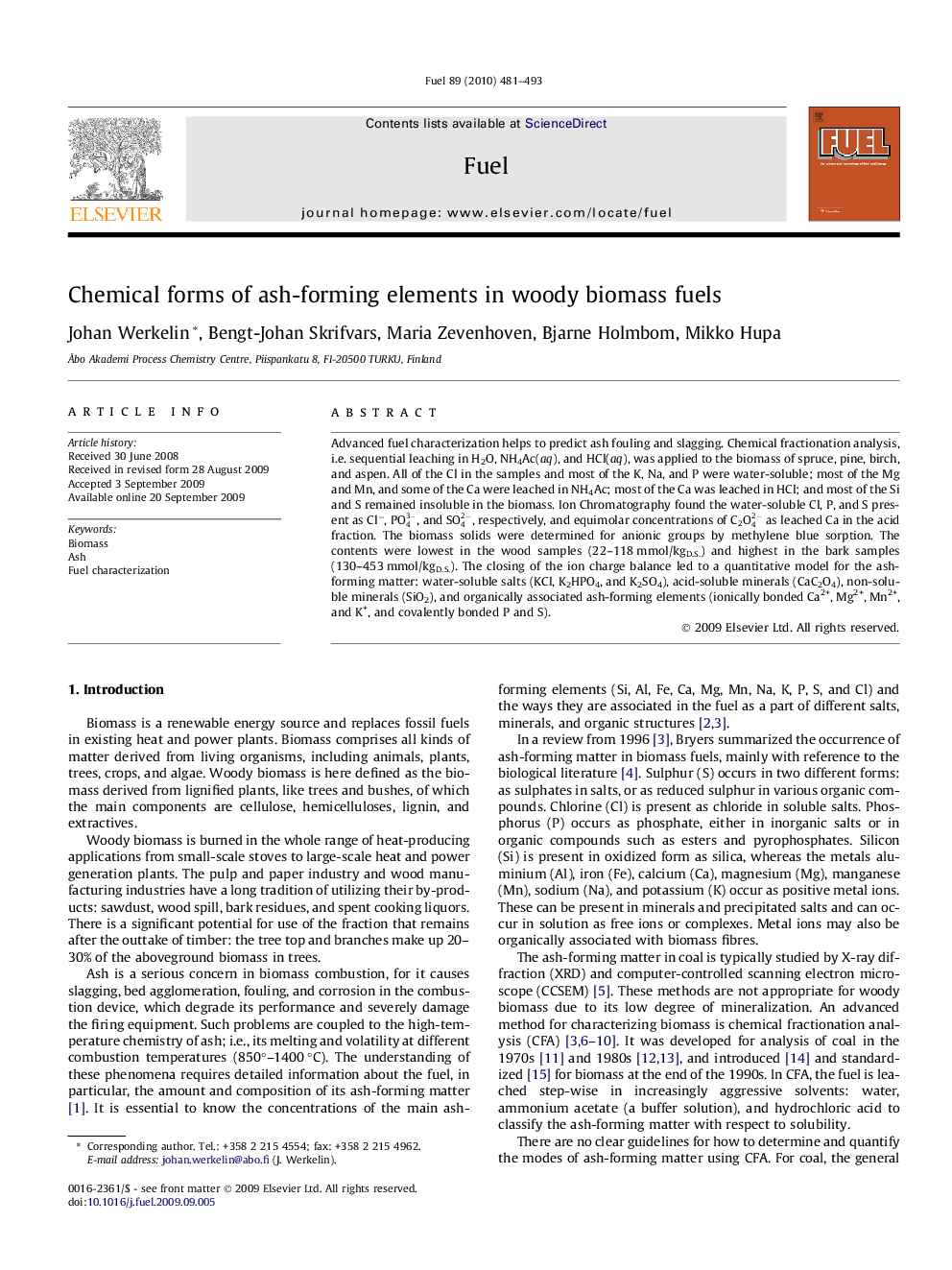| Article ID | Journal | Published Year | Pages | File Type |
|---|---|---|---|---|
| 206616 | Fuel | 2010 | 13 Pages |
Advanced fuel characterization helps to predict ash fouling and slagging. Chemical fractionation analysis, i.e. sequential leaching in H2O, NH4Ac(aq), and HCl(aq), was applied to the biomass of spruce, pine, birch, and aspen. All of the Cl in the samples and most of the K, Na, and P were water-soluble; most of the Mg and Mn, and some of the Ca were leached in NH4Ac; most of the Ca was leached in HCl; and most of the Si and S remained insoluble in the biomass. Ion Chromatography found the water-soluble Cl, P, and S present as Cl−, PO43-, and SO42-, respectively, and equimolar concentrations of C2O42- as leached Ca in the acid fraction. The biomass solids were determined for anionic groups by methylene blue sorption. The contents were lowest in the wood samples (22–118 mmol/kgD.S.) and highest in the bark samples (130–453 mmol/kgD.S.). The closing of the ion charge balance led to a quantitative model for the ash-forming matter: water-soluble salts (KCl, K2HPO4, and K2SO4), acid-soluble minerals (CaC2O4), non-soluble minerals (SiO2), and organically associated ash-forming elements (ionically bonded Ca2+, Mg2+, Mn2+, and K+, and covalently bonded P and S).
